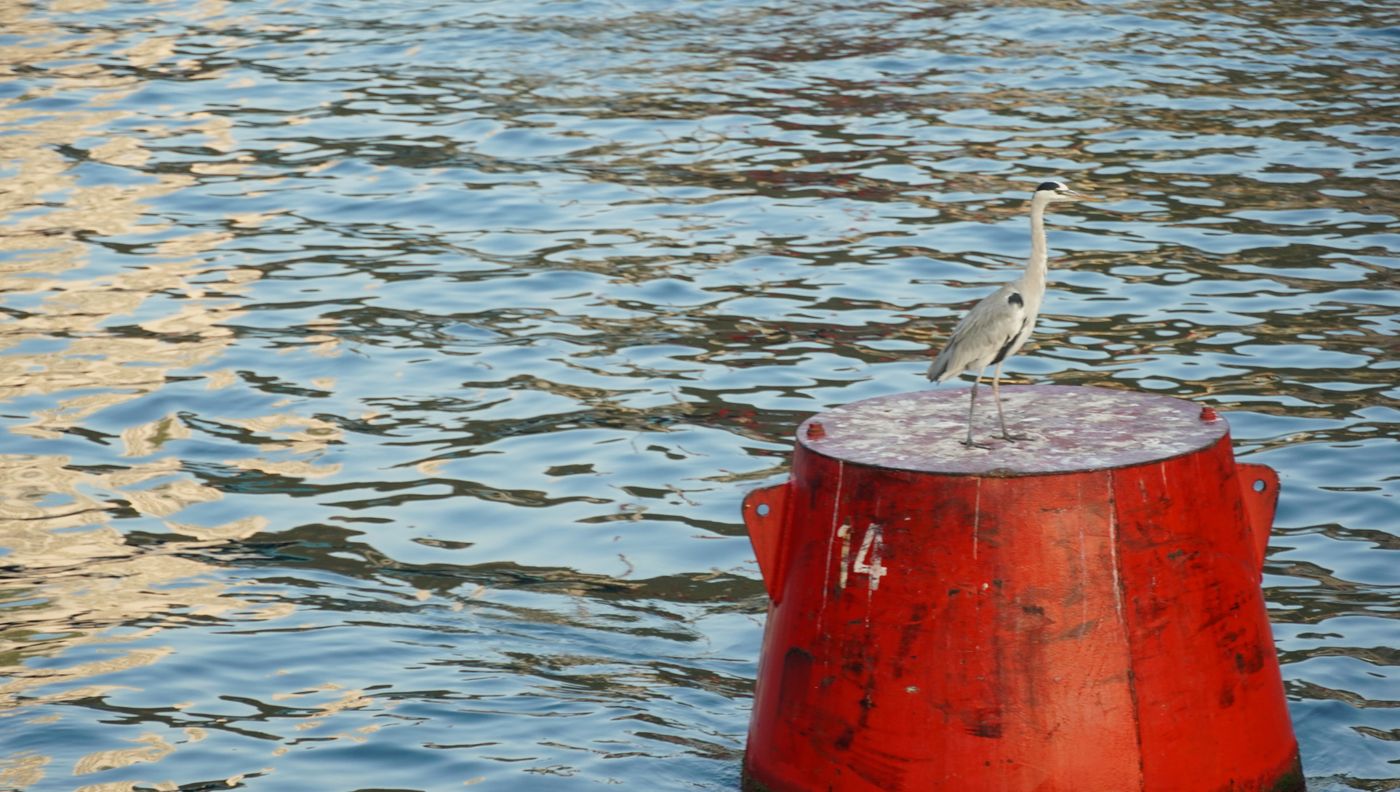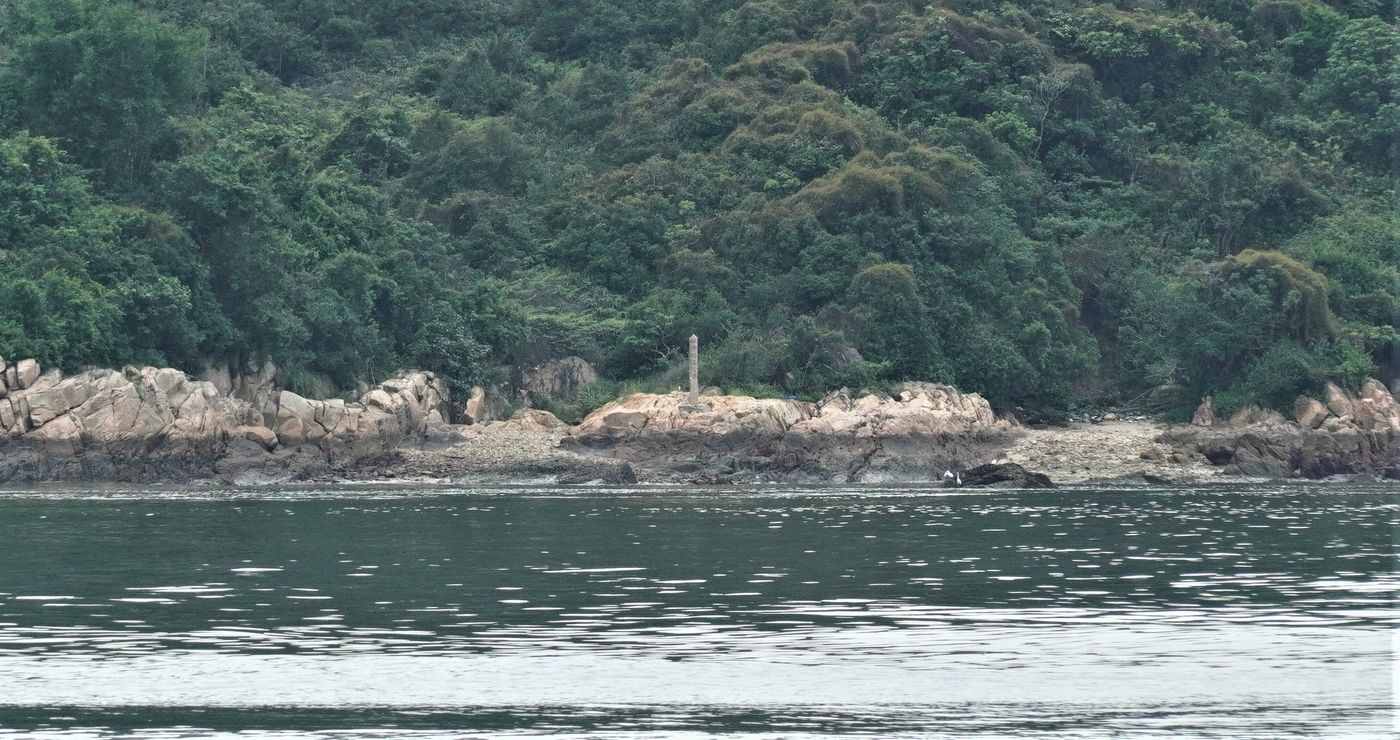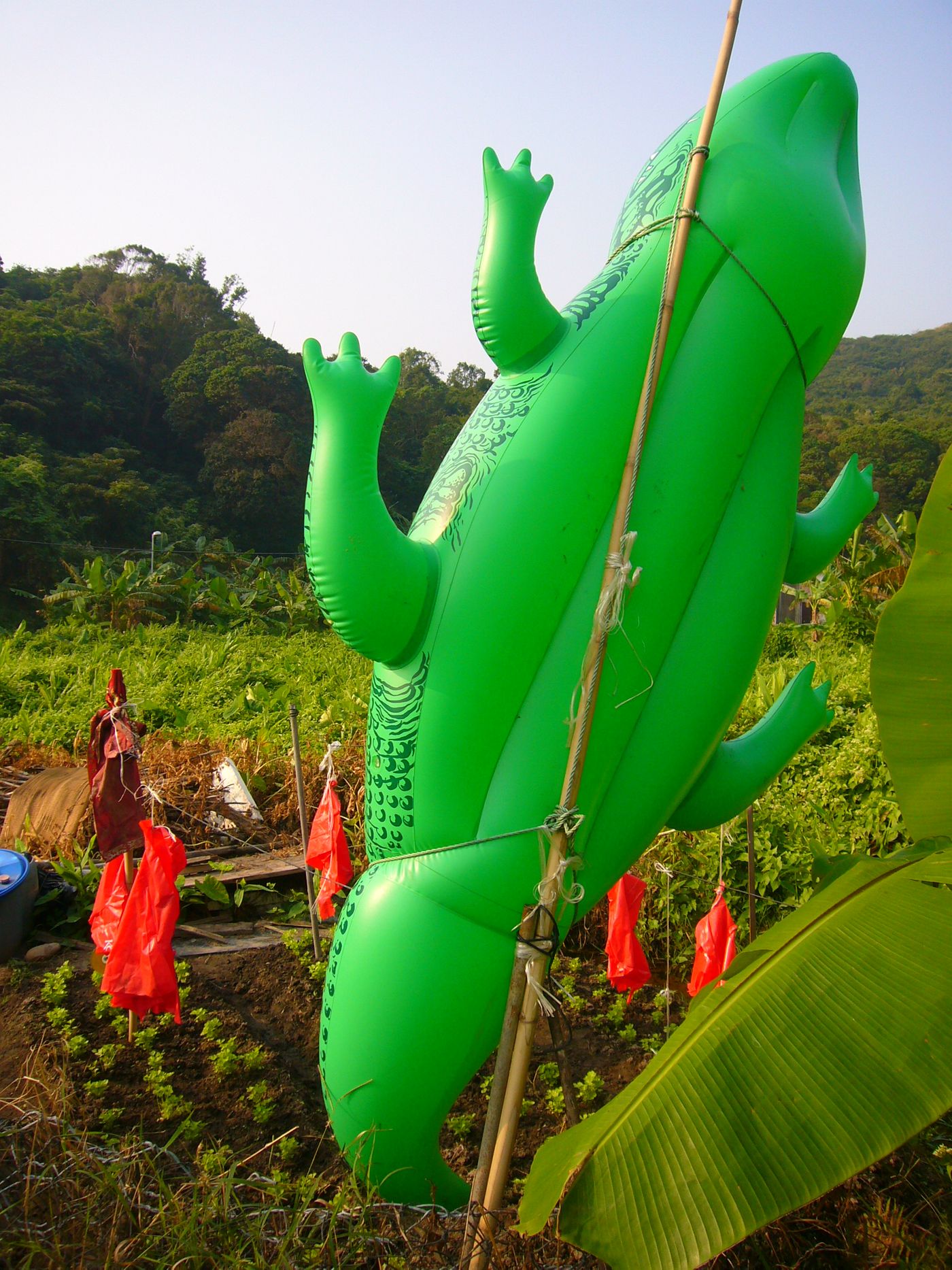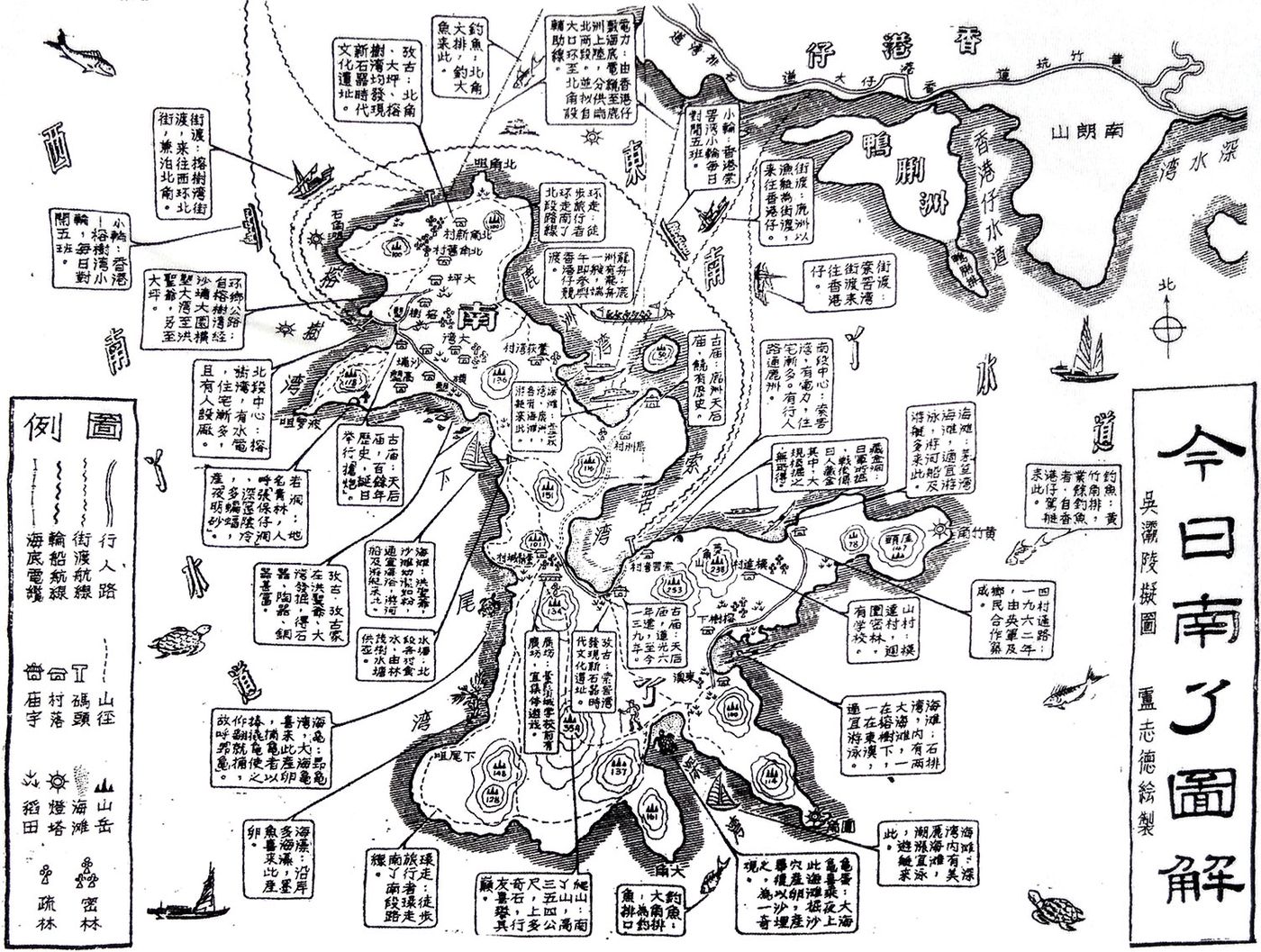
關注藝術生態、城市空間、藝術勞動及文化政治等議題。著作包括:《活在平常》(2012)、《我愛Art Basel──論盡藝術與資本》(2018)等。近年愛上島嶼研究,近作有《南丫說:》(合著)及《模達今昔──南丫島模達村歷史及社會研究計劃》。
說南丫 On Lamma (關於《南丫說:》,仲有好多野想講……(之三)
[ 遲黎先上岸。這一篇其實才是《南丫說:》的總論。展覽現正閉館,重開無期。唯有貼出示眾。This is the bilingual project statement of Lamma Mia. I post it here because there's little hope that we can re-open the exhibition soon. ]

城市人心目中的鄉郊,往往有兩種典型。一種是花香鳥語、人情味濃、與世無爭等美好想像;另一種是蛇蟲鼠蟻、原始落後、人迹罕至等恐懼與排斥──簡而言之,鄉郊就是城市的反面。早期一些新界研究,有一種把「時間空間化」的傾向──即是有些來自城市的研究員,把自己與他者的空間距離,當成是時間距離。結果是把鄉郊歷史化、物件化,例如去掉所有生活痕跡、把老屋復修到原來樣式。對於四面環海的島嶼,觀光客、城市人以至規劃者,往往亦帶著種種以陸地為中心的視角和知識,投射他們的慾望和浪漫的想像。要麼認為她是需要追上城市化、現代化。又或者把居民原來的生計資源,變成受保護的對象。
There are often two stereotypical images of rural areas in the minds of urban dwellers: one is the rural idyll, filled with birdsong and fragrant flowers, where everyone lives in harmony; the other is the rough, desolated rustic village, overwhelmed with pests and horrific animals. In short, the countryside is seen as the complete opposite of the city. Some previous research about the New Territories often shows a tendency towards ‘spatialisation of time’. In other words, researchers living in the urban area simply regarded the spatial distance between themselves and the Other as time distance. Their research outcome often leads to the historicising and objectifying of the countryside by removing all life traces and conserving old houses to their original appearance. Tourists, urban dwellers and planners also tend to project their desires and romantic imaginations on islands with various continental perspectives and knowledge. They either assumed an immediate need for urbanisation and modernisation, or simply considered the natural resources as something subject to their protection.
陸上人遠觀島嶼,覺得可望而不可即。斐濟的大洋洲研究學者 Epeli Hau'ofa指出,這種「地狹人少」的錯覺,是因為陸上人習慣腳踏實地、不懂得水面的生計和島嶼的生活方式,才會視海洋為無物。但如果我們把視覺移到船上,卻會重新發現原來港島南岸並不是香港的盡頭,反是廣闊的海域和眾多島嶼的開端。最近香港亦興起了一股探索島嶼的熱潮,紛紛以島嶼生活文化、地景為題策辦展覽、工作坊、藝術活動及專題創作結集等,從另一個角度反思我們習以為常的歷史觀。這些嘗試和努力,不禁令我們猛然想起,香港島其實本來也是四面環海,只是經歷十九世紀開始的填海工程加上海底隧道及地下鐵路的開通,她作為海島的地理特徵才被淡化。
Inlanders tend to see islands in a far sea as having a sparse population and limited land area. Epeli Hau'ofa, a Fijian scholar of Oceania studies, pointed out that such a misconception of islands neglects the importance of the ocean and is caused by an ignorance of the islanders’ ways of life. Once we change our perspective by focusing on the water, we will realise that the southern coast of Hong Kong Island should not be seen as the boundary of Hong Kong itself, but a gateway to the vast ocean and numerous islands. In recent years, Hong Kong has seen a growing trend of island exploration. Plenty of exhibitions, workshops, art events, and collaborations based on the cultural and natural landscape on islands have been organised, prompting us to reflect on our conventional historical perspectives. These attempts never fail to remind us that Hong Kong Island is indeed surrounded by the sea — a fact that has been overshadowed by the opening of the cross-harbour tunnels and railways and the massive shoreline expansion projects since the 19th century.

就在香港仔不到四公里的對岸,便是面積達13.85平方公里的南丫島。在一般城市人的心目中,她可能就是二十多個主要離島中,最富異國風情的「小島」──雖然她是長洲的 5.6 倍,比青衣還要大;而且幅員廣闊、資源豐富,水陸聚落源遠流長。本計劃「南丫說:」著重研究和整理島民的生計方式,特別是延綿的水陸交界,到底醞藏著甚麼在地知識。例如南丫島上幾所廟宇,平日看似人煙稀疏。但只要時候到了,香港仔、筲箕灣、赤柱、蒲苔島以及港九水陸居民,便如潮淹至。島民當然也會在灣內暢泳甚至划龍舟,但更重要的是海面也是運輸與撈捕的地方。從貝類、海藻、魚蝦、山草、農田到水源,都得靠居民共同維持,才能生生不息。如果我們能了解到水陸交界,正是眾多族群和物種賴以維生和互動的地景,便會發現原來「小」與「島」,其實並無必然關係。
In the minds of local urban dwellers, Lamma Island is perhaps the most exotic ‘isle’ among the dozens of major outlying islands in Hong Kong. But in reality, this vast island is within arm's reach. The distance between Lamma Island and the nearest tip of Hong Kong Island is less than 4 km. The island measures an area of 13.85 km2 or 5.6 times of Cheung Chau, which is even bigger than Tsing Yi. This spacious island boasts a long history of its onshore and offshore residents and is abundant in natural resources. “Lamma Mia” Public Art Project aims to study and draw a clearer picture of the livelihoods on Lamma Island, with a particular focus on the local knowledge developed from coastal living. For example, the temples on Lamma Island may seem desolate on a normal day, but on special occasions, residents from Aberdeen, Shau Kei Wan, Stanley, Po Toi Island, Hong Kong and Kowloon will swarm in like a tide. While local residents would swim or row dragon boats in the inlet, the sea is where everyday transportation and fishery take place. The shellfish, seaweed, fish, shrimps, herbs, farmland, and water sources all need to be sustained by the concerted efforts of the locals. Once we understand that the land and water of and around Lamma Island is where various ethnic groups and species live on and reciprocate, we will realise that the island is neither small nor exotic.
島嶼之所以特別引人暇思,正在於主觀與客觀、整體與局部的差異。「南丫說:」想要探索的,正是這種不一定是非此即彼的二重性。香港人普遍視離島為消閒和玩樂的地方──椰林樹影、水清沙幼和地道美食。樂了一天之後,便又趕渡船班,準備明天的忙碌。事實上,在索罟灣大街上腳踏一雙人字拖、看似遊手好閒的島民,卻很可能在各司其職,維護著島上生計。這座島嶼四面環海,看似一個封閉的單元,只靠渡輪連繫到市區,正好座落在最繁忙的主要航道博寮海峽之上。當你認真深究,赫然發現島嶼由於地理關係,形成了南北兩個主要社區,當中醞含著與城市不同的生活節奏──隱世豪園和清修道場座落其中;安土重遷的陸上人、四海為家的水面人、從城市遷入不同族裔居民。要說她自給自足嗎?過去島上不少鄉村,都得賴漂洋過海的男丁匯款過活;而現在的旅遊業,也帶動各種資源流動。她是看似青山綠水,但發電廠與石礦場,卻又造成了不可逆轉的改變,並為城市發展提供了寶貴的天然資源。島嶼之所以引人入勝,可能正是因為她沒有單一的敍事,一切都靠來往復返的實踐,互相依存。馬爾他島嶼研究學者Godfrey Baldacchino,把這種既開放、又封閉的特色,稱為「島嶼的弔詭」,居民與遊客、自然與人造之間,各種差天共地的想像和現實,奇妙地並行不違。
What makes islands particularly fascinating is their objective-subjective and part-whole differences. These non-exclusive dualities are what the Project intends to explore. Hongkongers generally consider the outlying islands as leisure areas with stunning landscapes and delicacies. After a joyful day of excursion on these islands, they may just rush back to the city, getting prepared for work on the following day. Islanders in their flip-flops strolling along First Street in Sok Kwu Wan may appear idle to urban dwellers, but in fact, they each have their own role in the community, serving the neighbourhood unassumingly. As the island is surrounded by the sea, it is often regarded as an insular destination connected to the city only by ferry, even though the island is situated in the middle of one of Hong Kong's busiest principal fairways. If you observe closely, you will find that the island is divided into northern and southern communities due to its geographical features, with a pace of life different from that of the city. Being home to secluded mansions and sanctuaries, Lamma Island is populated by inlanders, water people and other ethnic groups who have moved in from the city. It is dubious whether the island is self-sufficient: in the past, many villages on the island had to rely on the remittances from their villagers working overseas, whereas the tourism industry nowadays has brought resources and income to the island. While the stunning natural scenery seems undisturbed, power plants and quarries in Lamma, on the other hand, have caused irreversible changes in the provision of precious natural resources for urban development. As an embodiment of reciprocity and interdependence, the island cannot be fully grasped by a monolithic narrative. Godfrey Baldacchino, a Maltese scholar of island studies, called this mix of openness and closeness the ‘paradox of island’, which allows the coexistence of contrasting imaginations and conceptions between residents and tourists, the natural and the man-made.

這次計劃選擇把焦點設置在以索罟灣為中心的南段,正是因為她與港島南岸息息相關,打破島嶼遺世獨立的想像,卻又保有自身的生活地景。我們有幸獲得南丫島南段鄉事委員會的支持,由研究團隊進行田野考察和口述歷史訪問,再由策展團隊和藝術家深入社區,共同思考城市和鄉郊、陸地和海洋的關係。收集得來的各種親身經歷和在地知識,表面看似平平無奇,卻是「只此一家,別無分號」的地方文化。我有幸棲居在島上共二十個寒暑,作為一個文化藝術工作者,我想我能夠回饋這個地方的最好方法,就是好好地記錄她。感謝策展和研究團隊的努力,所有島民和鄰居的信任,讓「南丫說:」得以順利開展。
The Project focuses on Sok Kwu Wan of South Lamma because of its close connections with the southern coast of Hong Kong Island, which break the imagined separateness of the island, while keeping its unique cultural landscape and way of life. We are honoured to have the support of the Lamma Island (South) Rural Committee, which facilitated the research team to conduct field studies and oral interviews, and the curatorial team and artists to investigate further into the community so as to rethink the relationship between the countryside and the city, the land and the sea. The personal stories and local knowledge collected may seem ordinary, but they indeed encapsulate the uniqueness of the local cultures. I am fortunate enough to have lived on Lamma Island for two decades. As a cultural and art practitioner, I believe a thorough documentation of this place is the best way to return the favour to the island. I am thankful for the efforts of the curatorial and research team, and the support from all the islanders and neighbours.




參考資料 Reference
中文資料 Chinese Materials
王惠玲、羅家輝。《記憶景觀──港仔漁民口述歷史》。香港︰三聯書店(香港),2015。
張少強、古學斌。〈跳出原居民人類學的陷阱:次原居民人類學的立場、提綱與實踐〉,《社會學研究》,第二期(2006)︰107-133頁。
關天林主編。《字花第81期︰島》。香港︰水煮魚文化,2019。
英文資料 English Materials
Baldacchino, Godfrey. “The Lure of the Island: A Spatial Analysis of Power Relations.” Journal of Marine and Island Cultures 1, no. 2 (December 2012): 55–62. https://doi.org/10.1016/j.imic.2012.11.003.
Cheung, Sidney. “Traditional Dwellings, Conservation and Land Use: A Study of Three Villages in Sai Kung, Hong Kong”. Journal of the Hong Kong Branch of the Royal Asiatic Society, vol. 43 (2003): 1–14.
Hau’ofa, Epeli. “Our Sea of Islands (Reprinted from A New Oceania - Rediscovering Our Sea of Islands).” The Contemporary Pacific 6, no. 1 (Spring 1994): 148-161.
Hayward, Philip. “Introduction: Towards an Expanded Concept of Island Studies.” Shima: The International Journal of Research into Island Cultures 10, no. 1 (April 2016): 1–7. https://doi.org/10.21463/shima.10.1.03.
Hessler, Stefanie. “Tidalectic Curating.” Journal of Curatorial Studies 9, no. 2 (October 2020): 248–70. https://doi.org/10.1386/jcs_00023_1.
Larjosto, Vilja. “Islands of the Anthropocene.” Area 52, no. 1 (March 2020): 38–46. https://doi.org/10.1111/area.12515.
Reckin, Anna. “Tidalectic Lectures: Kamau Brathwaite’s Prose/Poetry as Sound-Space.” Anthurium A Caribbean Studies Journal 1, no. 1 (2003): 5. http://doi.org/10.33596/anth.4
Suwa, Jun’ichiro. “The Space of Shima.” Shima: The International Journal of Research into Island Cultures 1, no. 1 (2007): 6–14. https://www.shimajournal.org/issues/v1n1/c.-Space-of-Shima.pdf
喜欢我的文章吗?
别忘了给点支持与赞赏,让我知道创作的路上有你陪伴。
发布评论…